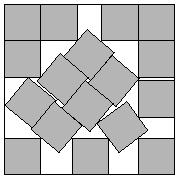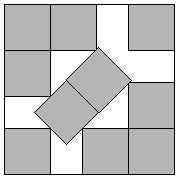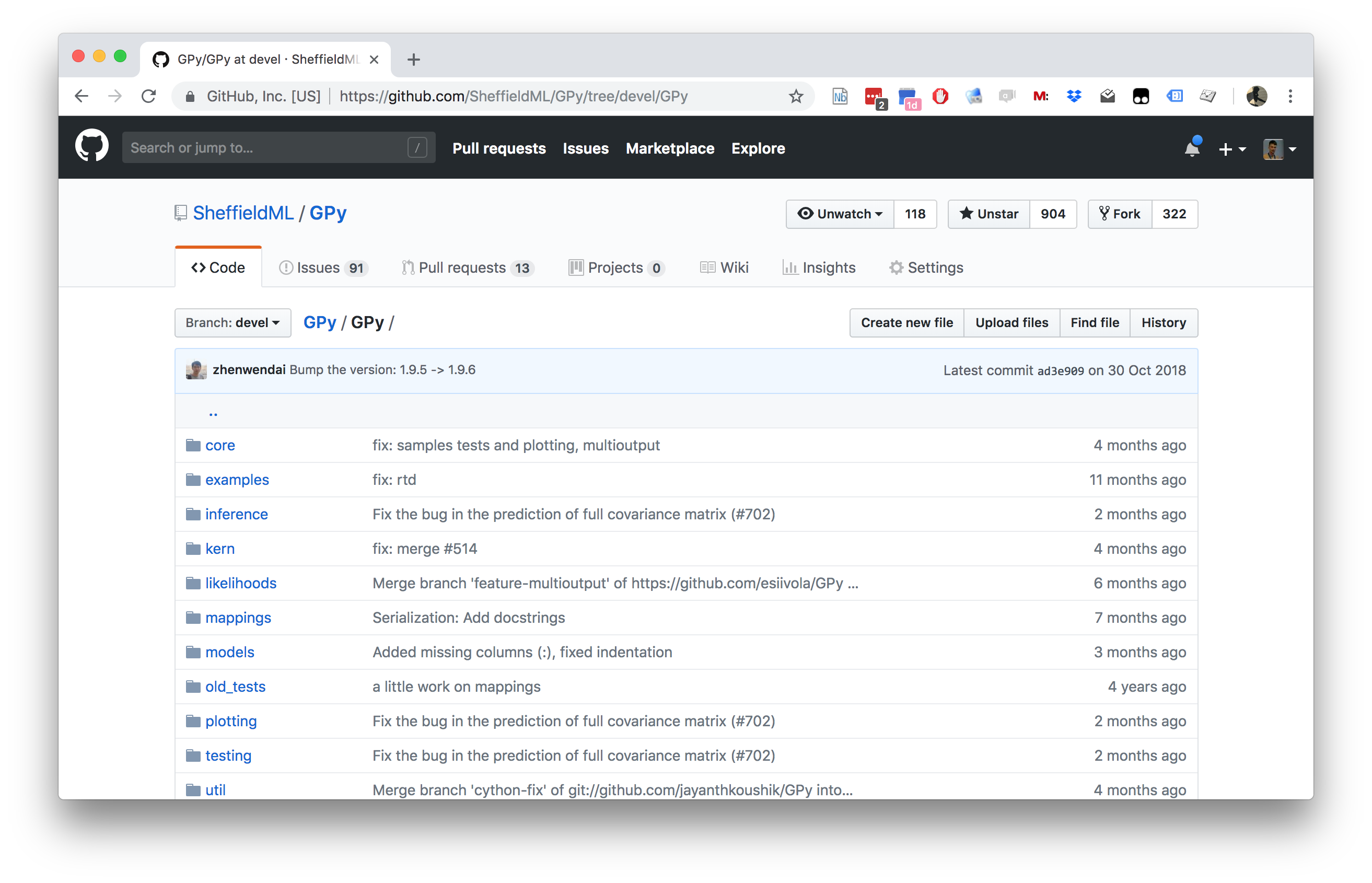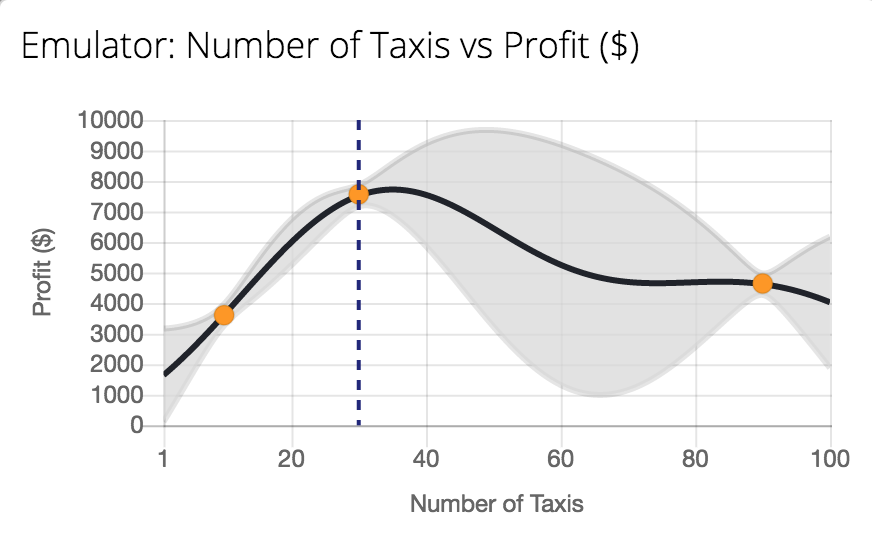Emulation
Emulation

‘I checked it very thoroughly,’ said the computer, ‘and that quite definitely is the answer. I think the problem, to be quite honest with you, is that you’ve never actually known what the question is.’
Douglas Adams The Hitchhiker’s Guide to the Galaxy, 1979, Chapter 28

When you are a Bear of Very Little Brain, and you Think of Things, you find sometimes that a Thing which seemed very Thingish inside you is quite different when it gets out into the open and has other people looking at it.
A.A. Milne as Winnie-the-Pooh in The House at Pooh Corner, 1928
Surrogate Modelling in Practice
- Emergent phenomena require computational power.
- In surrogate modelling we use statistical/ML models to learn regularities in those emergent phenomena.
Types of Simulations
- Simulation can be differential equation models
- Either abstracted (like epidemilogical models).
- Or fine-grained (like climate/weather).
- Discrete event simulations
- Either turn based (e.g. Game of Life or F1 Strategy Simulations)
- Or Event based (e.g. Gillespie algorithm for chemical models
Fidelity of the Simulation
- Simulations work at different fidelities.
- e.g. difference between strategy simulation in F1 and aerodynamics simulation
Epidemiology
Modelling Herd Immunity
\[ \frac{\text{d}{S}}{\text{d}t} = - \beta S (I_1 + I_2). \]
\[ \frac{\text{d}{E_1}}{\text{d}t} = \beta S (I_1 + I_2) - \sigma E_1. \]
\[ \frac{\text{d}{E_2}}{\text{d}t} = \sigma E_1 - \sigma E_2. \]
\[ \frac{\text{d}{I_1}}{\text{d}t} = \sigma E_2 - \gamma I_1, \]
\[ \frac{\text{d}{I_2}}{\text{d}t} = \gamma I_1 - \gamma I_2. \]
\[ \frac{\text{d}R}{\text{d}t} = \gamma I_2. \]
Strategies for Simulation
- Split variables into state variables, parameters and results.
- In herd immunity
- State variables: susceptible, exposed, infectious, recovered.
- Parameters: reproduction number, expected lengths of infection, lockdown timings.
- Results: e.g. total number of deaths
Strategies for Simulation
- Use emulator to map from e.g. parameters to total number of deaths.
- Treat parameters and results of simulator as inputs and outputs for emulator.
.
Backtesting Production Code
- Third type of simulation.
- Counterfactual running of system code.
Alexa
Alexa
Alexa
Speech to Text
Cloud Service: Knowledge Base
Text to Speech
Prime Air

Supply Chain Optimization
Supply Chain Optimization
Forecasting
Inventory and Buying
- Automated buying based on:
- Supplier lead times.
- Demand Forecast.
- Cost basis of the product.
Buying System
Monolithic System
Service Oriented Architecture
Intellectual Debt

Examples in Python
News Vendor Problem in python (for ordering NFL Replica Jerseys.
Trolley & Pendulum using sympy (symbolic python)
Examples in Python
Mountain Car in the OpenAI Gym.
Hodgkin Huxley by Mark Kramer.
Formula One Race Simulation in Python by Nick Roth.
Fluid Dynamics Discretisation of PDEs
Stress in a connecting rod Discretisation of PDEs
Network simulation Discrete Event simulation.
Gillespie Algorithm notebook (in Python 2.7).
Simulation System

Monolithic System
Service Oriented Architecture
Experiment, Analyze, Design
A Vision
We don’t know what science we’ll want to do in five years’ time, but we won’t want slower experiments, we won’t want more expensive experiments and we won’t want a narrower selection of experiments.
What do we want?
- Faster, cheaper and more diverse experiments.
- Better ecosystems for experimentation.
- Data oriented architectures.
- Data maturity assessments.
- Data readiness levels.
Packing Problems

Packing Problems

Packing Problems

Modelling with a Function
- What if question of interest is simple?
- For example in packing problem: what is minimum side length?
Erich Friedman Packing Data
Erich Friedman Packing Data: Squares in Squares
Gaussian Process Fit
Erich Friedman Packing Data GP
Statistical Emulation
Emulation
Emulation
Emulation
Emulation
Emulation
GPy: A Gaussian Process Framework in Python

GPy: A Gaussian Process Framework in Python
- BSD Licensed software base.
- Wide availability of libraries, ‘modern’ scripting language.
- Allows us to set projects to undergraduates in Comp Sci that use GPs.
- Available through GitHub https://github.com/SheffieldML/GPy
- Reproducible Research with Jupyter Notebook.
Features
- Probabilistic-style programming (specify the model, not the algorithm).
- Non-Gaussian likelihoods.
- Multivariate outputs.
- Dimensionality reduction.
- Approximations for large data sets.
GPy Tutorial
Covariance Functions
\[ k(\mathbf{ x}, \mathbf{ x}^\prime) = \alpha \exp\left(-\frac{\left\Vert \mathbf{ x}- \mathbf{ x}^\prime \right\Vert_2^2}{2\ell^2}\right), \]
Kernel Output
Covariance Functions in GPy
- Includes a range of covariance functions
- E.g. Matern family, Brownian motion, periodic, linear etc.
- Can define new covariances
Combining Covariance Functions in GPy
Multiplication
A Gaussian Process Regression Model
\[ f( x) = − \cos(\pi x) + \sin(4\pi x) \]
\[ y(x) = f(x) + \epsilon, \]
Noisy Sine
GP Fit to Noisy Sine
Covariance Function Parameter Estimation
GPy and Emulation
\[ f(\mathbf{ x}) = a(x_2 - bx_1^2 + cx_1 - r)^2 + s(1-t \cos(x_1)) + s \]
Computation of \(\left\langle f(U)\right\rangle\)
- Compute the expectation of the Branin function.
- Sample at 25 points on a grid.
- Compute the mean (Reiemann sum approximation).
Emulate and do MC Samples
Alternatively, we can fit a GP model and compute the integral of the best predictor by Monte Carlo sampling.
Branin Function Fit
Uncertainty Quantification and Design of Experiments
- History of interest, see e.g. McKay et al. (1979)
- The review:
- Random Sampling
- Stratified Sampling
- Latin Hypercube Sampling
- As approaches for Monte Carlo estimates
Random Sampling
{Random sampling is the default approach, this is where across the input domain of interest, we just choose to select samples randomly (perhaps uniformly, or if we believe there’s an underlying distribution
Let the input values \(\mathbf{ x}_1, \dots, \mathbf{ x}_n\) be a random sample from \(f(\mathbf{ x})\). This method of sampling is perhaps the most obvious, and an entire body of statistical literature may be used in making inferences regarding the distribution of \(Y(t)\).
Stratified Sampling
Using stratified sampling, all areas of the sample space of \(\mathbf{ x}\) are represented by input values. Let the sample space \(S\) of \(\mathbf{ x}\) be partitioned into \(I\) disjoint strata \(S_t\). Let \(\pi = P(\mathbf{ x}\in S_i)\) represent the size of \(S_i\). Obtain a random sample \(\mathbf{ x}_{ij}\), \(j = 1, \dots, n\) from \(S_i\). Then of course the \(n_i\) sum to \(n\). If \(I = 1\), we have random sampling over the entire sample space.
Latin Hypercube Sampling
The same reasoning that led to stratified sampling, ensuring that all portions of \(S\) were sampled, could lead further. If we wish to ensure also that each of the input variables \(\mathbf{ x}_k\) has all portions of its distribution represented by input values, we can divide the range of each \(\mathbf{ x}_k\) into \(n\) strata of equal marginal probability \(1/n\), and sample once from each stratum. Let this sample be \(\mathbf{ x}_{kj}\), \(j = 1, \dots, n\). These form the \(\mathbf{ x}_k\) component, \(k = 1, \dots , K\), in \(\mathbf{ x}_i\), \(i = 1, \dots, n\). The components of the various \(\mathbf{ x}_k\)’s are matched at random. This method of selecting input values is an extension of quota sampling (Steinberg 1963), and can be viewed as a \(K\)-dimensional extension of Latin square sampling (Raj 1968).
Emukit Playground
Work Leah Hirst, Software Engineering Intern and Cliff McCollum.
Tutorial on emulation.
Emukit Playground

Emukit Playground

Conclusions
- Characterised types of simulation.
- Physical laws
- Discrete event
- Production Software Systems
- Introduced notion of emulation to replace simulation.
- Overviewed GPy software.
Thanks!
- twitter: @lawrennd
- podcast: The Talking Machines
- newspaper: Guardian Profile Page
- blog: http://inverseprobability.com